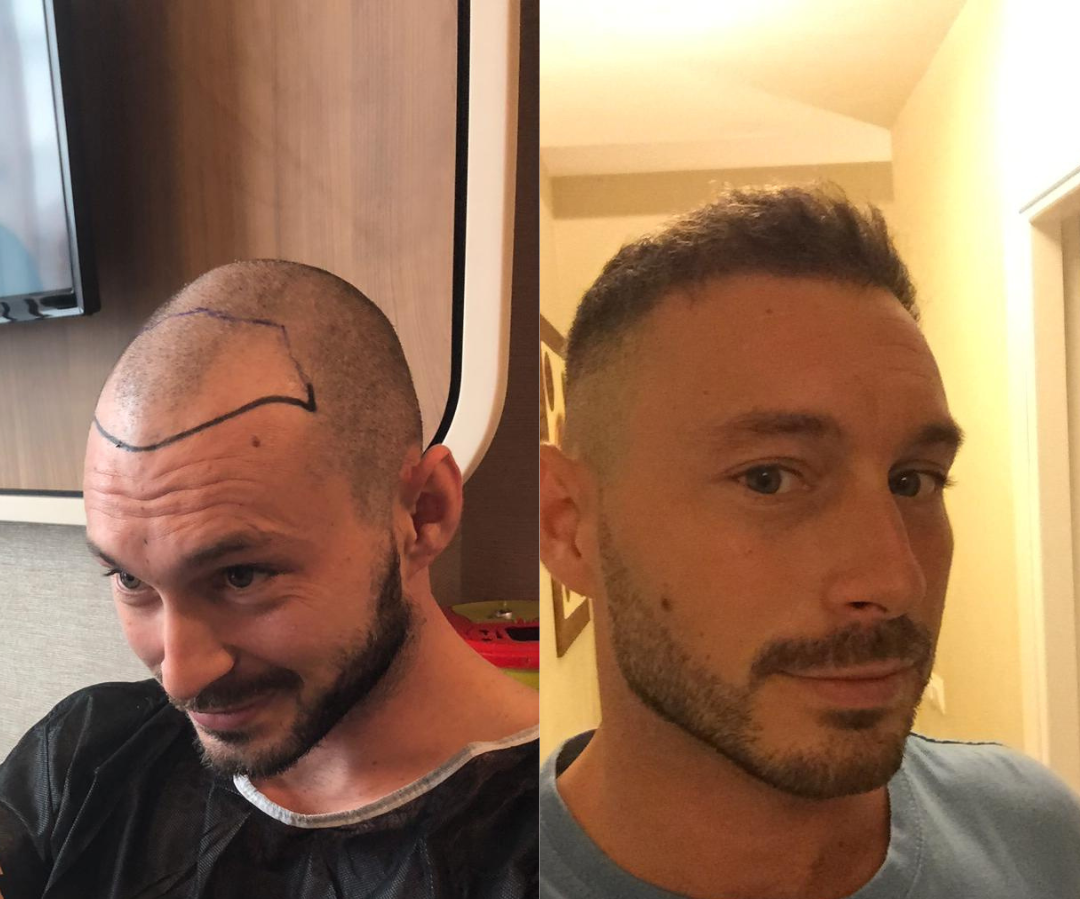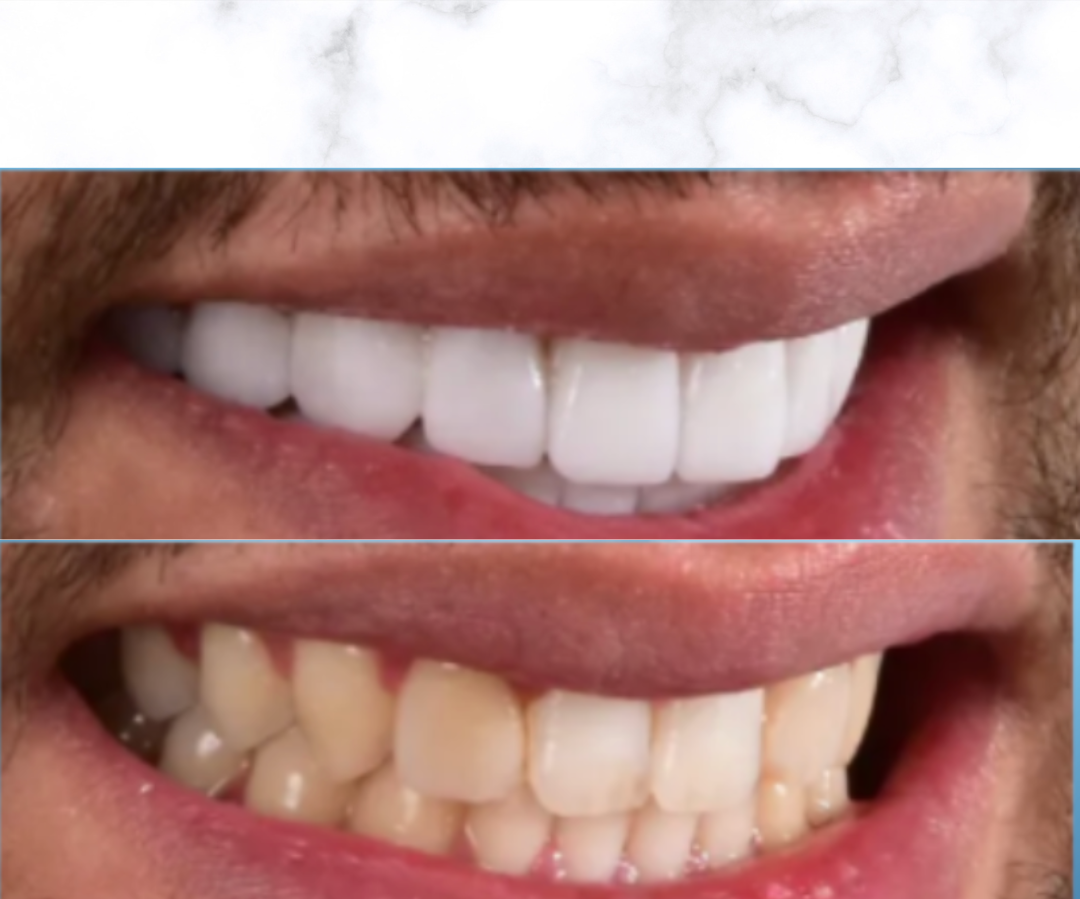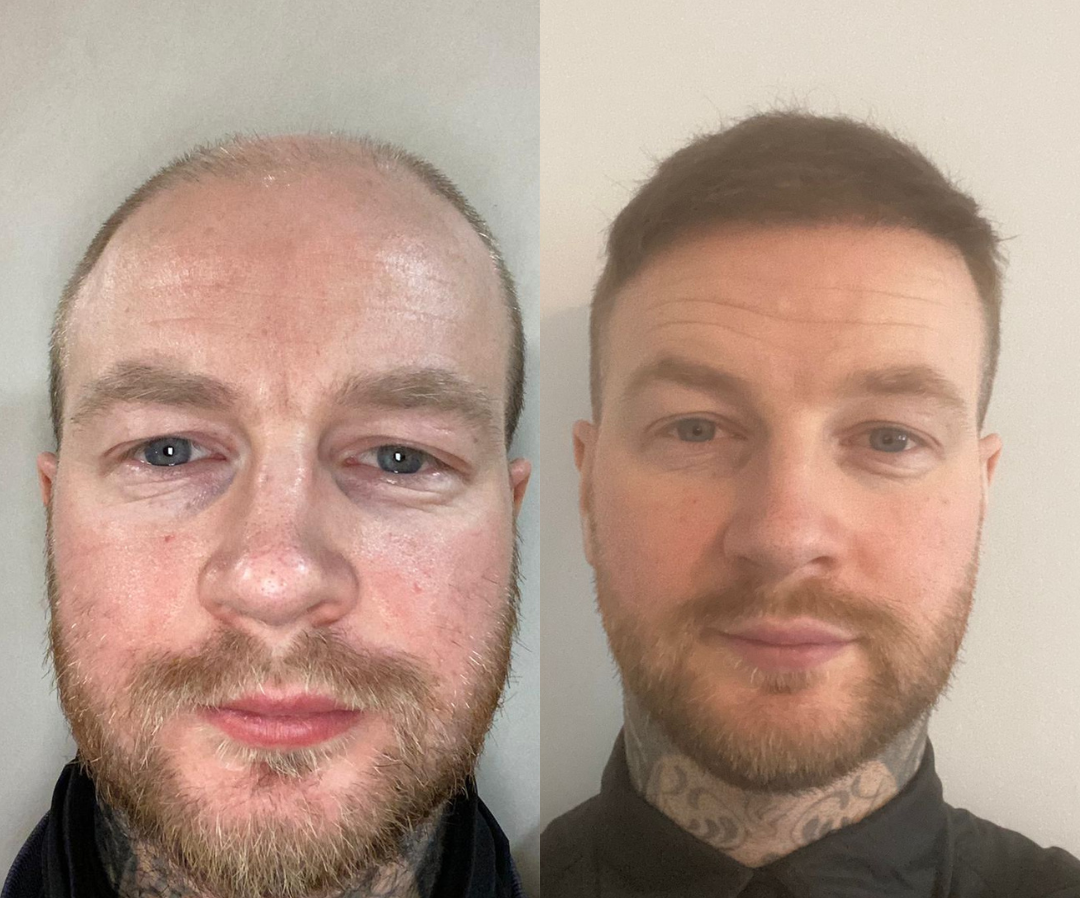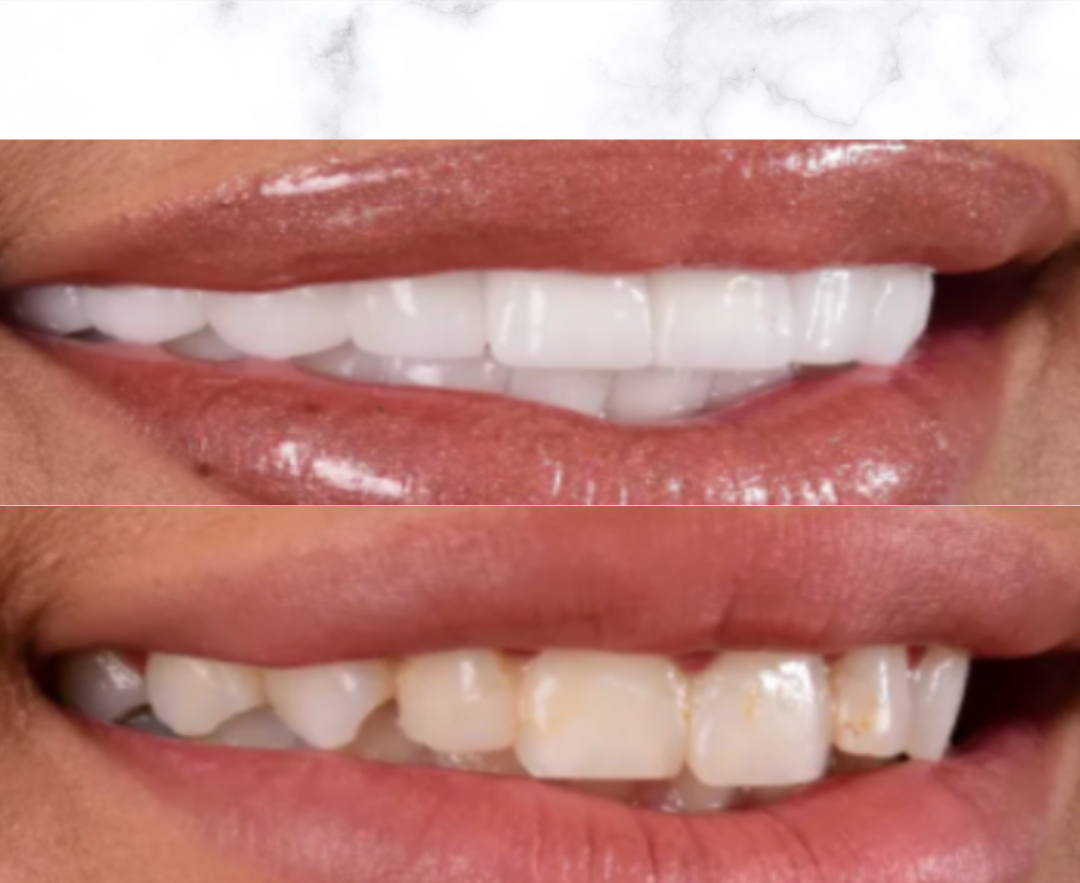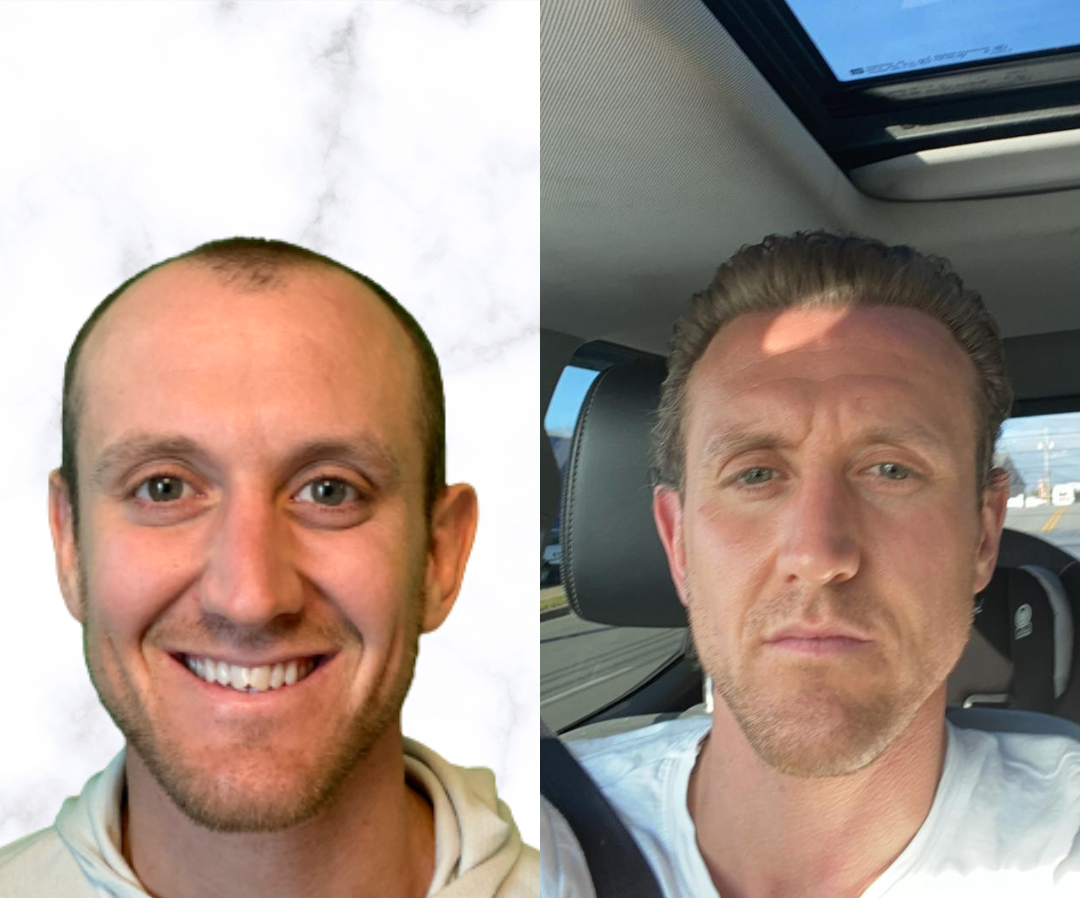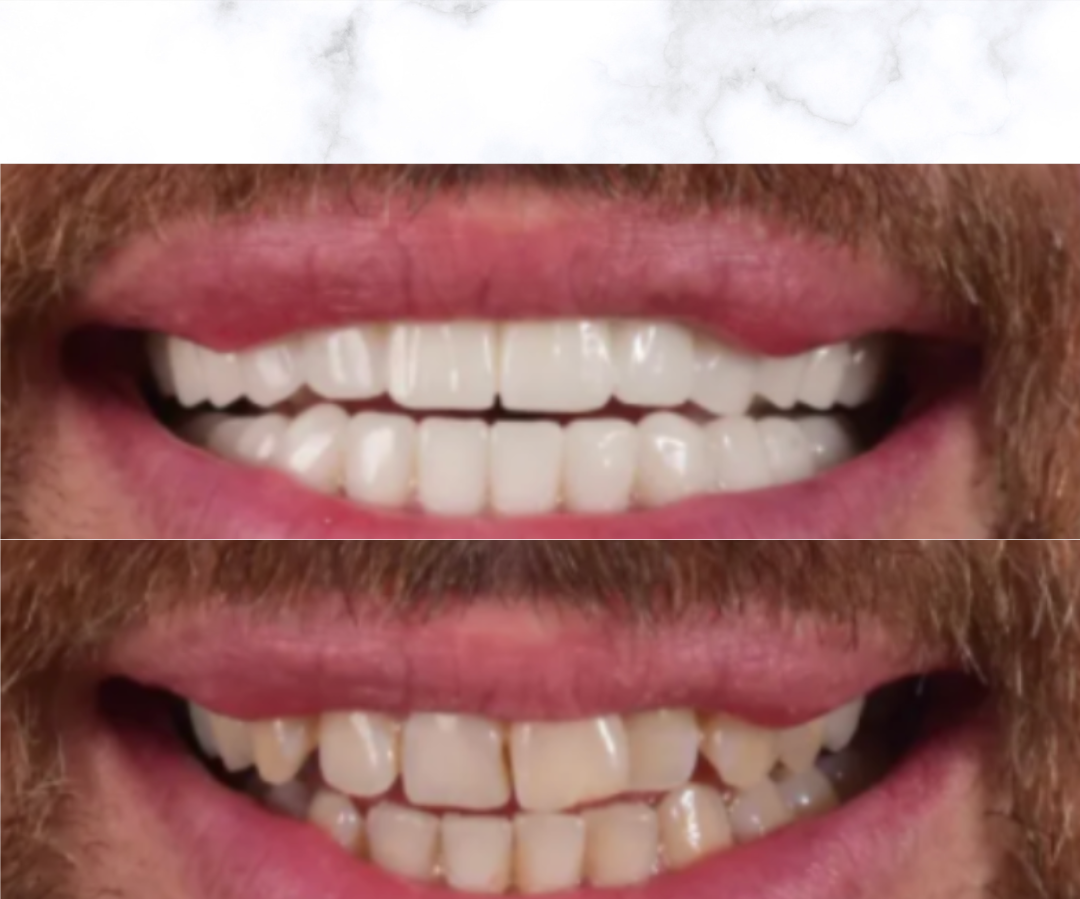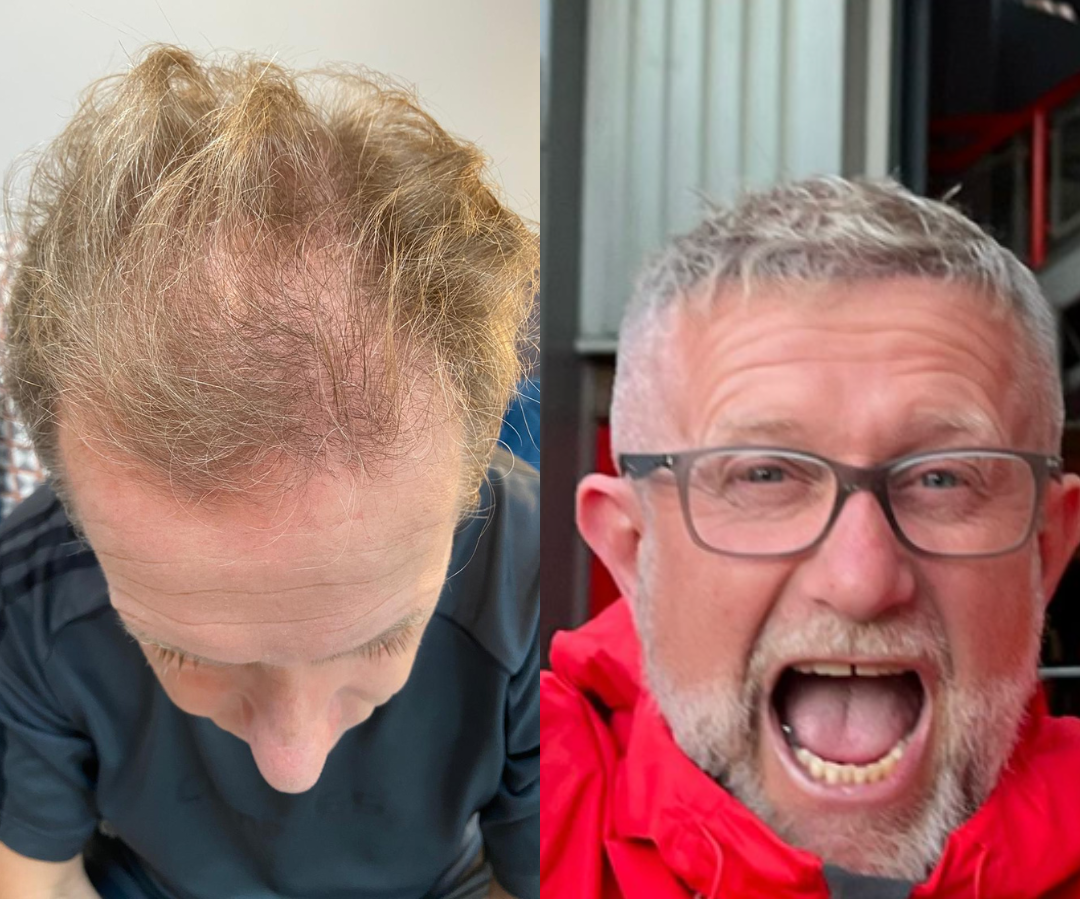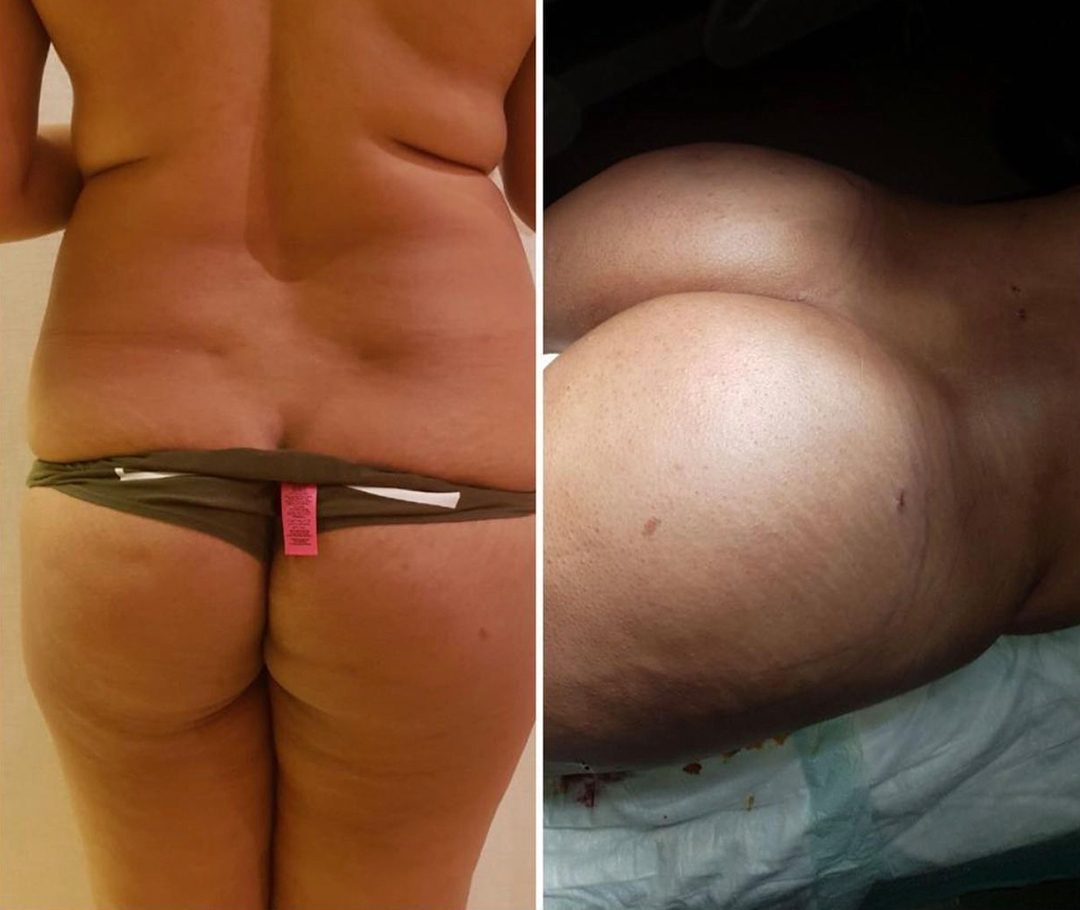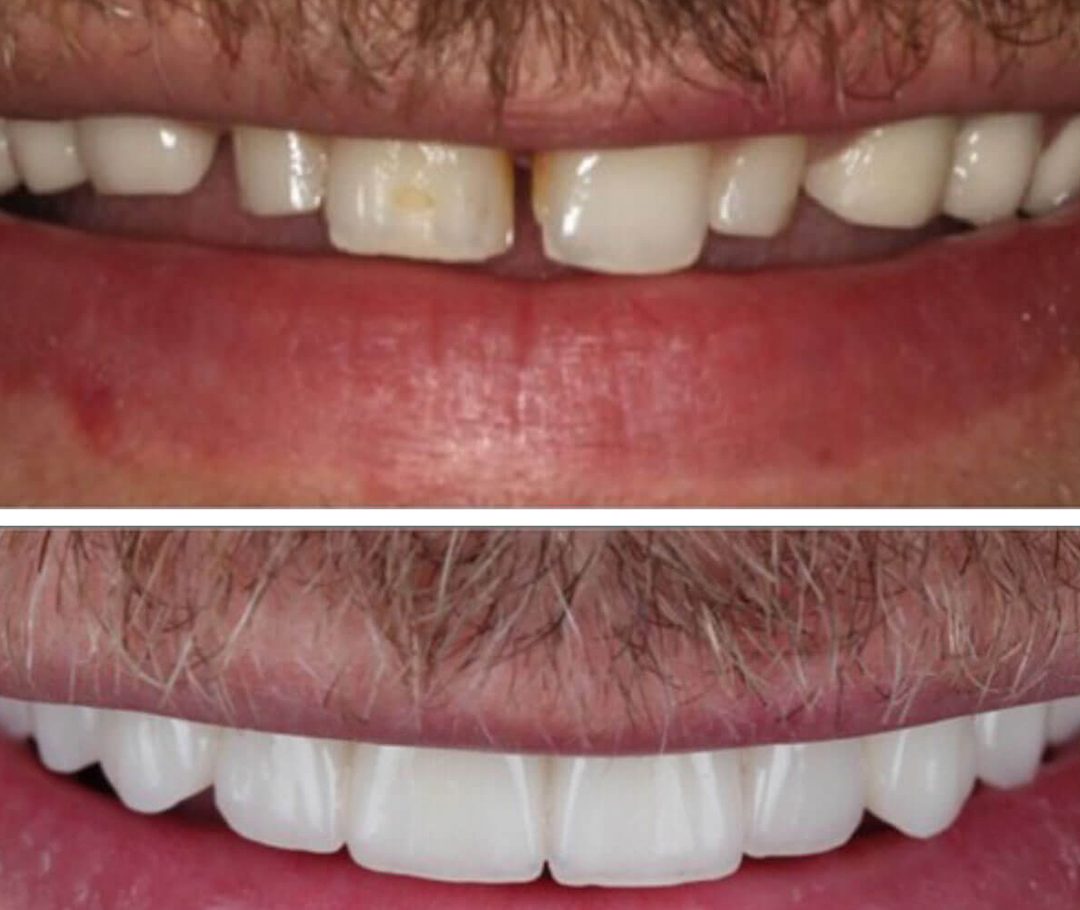Hair Transplants.
The next generation.
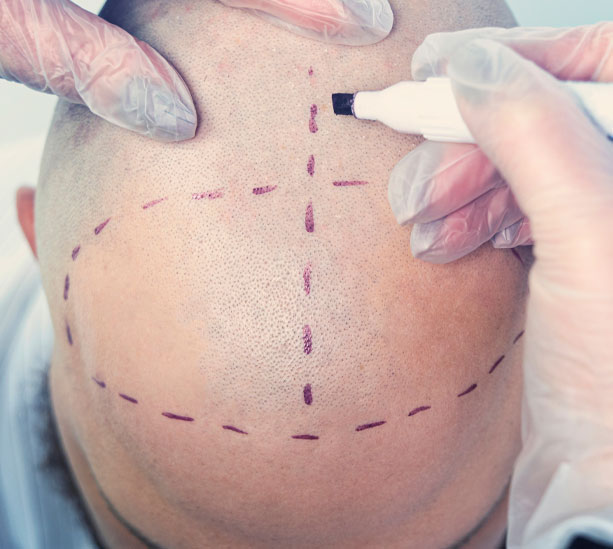
Hair Transplants
When it comes to Hair Transplants, next gen are the industry leaders. Providing the next-generation of quality, service and transparency.
The next gen team covers every step of your Hair Transplant process. From working with leading medical teams and supporting patients through their hair transplant journey. Our JCI-certified hospitals welcome hundreds of visitors each month from all over the world.
There are over 350 Hair Transplant clinics in Istanbul alone. Thanks to the efforts of the next gen team, you no longer have to trawl through hundreds of websites looking for the ideal clinic. Our exclusive agreement with one of the top-rated clinics, scoring 4.8/5 from over 450 Google reviews, ensures that you can be confident you will get the best possible Hair Transplant.
Hair Transplants are now safer, faster, more affordable, and come with a 98% success rate. The next gen team lead the way by combining the most advanced technologies, with unrivalled levels of customer service.
Explore the Nextgen Facilities

35000
Successful Operations

300
Monthly operations in 3 countries

80
Medical employees

70
We are in 70+ Countries
Before and After.
Speak to our team
Speak with one of our clinicians and get personalised advice.
Meet the next gen team.
The next gen team has been supporting patients from all over the world for the last five years, and the importance of patient satisfaction sits at the heart of everything we do.
In the interest of transparency, our team travel the length of the UK, hosting open evenings in major cities, where we get to know our patients, answer questions relating to the procedures and present to you precisely what you can expect from the next gen process.
- London
- Liverpool
- Manchester
- Birmingham
- Dublin
- Leeds
- Glasgow
- Newcastle
- Belfast
- Bristol
- Cardiff
- Brentwood, Essex
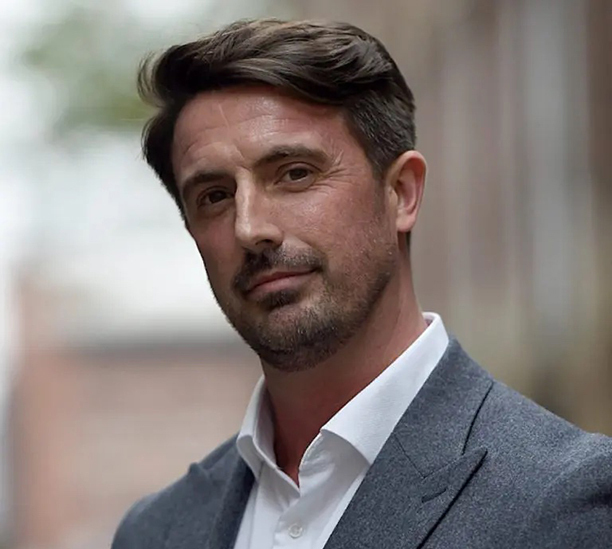
Speak to our team
Speak with one of our clinicians and get personalised advice.
Hair Transplants. The next generation.
About Hair Transplants
The next gen’s Hair Transplant and Hair Restoration surgeons have extensive experience in treating Male Pattern Baldness with the minimally-invasive, no linear scar, no stitch techniques known as FUE (Follicular Unit Extraction) and DHI (Direct Hair Implantation) Hair Transplantation
Our Hair Transplant doctors have been perfecting their technique since 2008 and are known worldwide for their expert results and reputation. The proof lies in our before and after photos and videos. Outstanding results and peace of mind. We ensure that your procedure and pre and post operative care is thorough with our tried and tested methods to ensure success.
Why is my hair thinning and falling out? The Hair Loss Problem
Up to 50% of men will have experienced some degree of hair loss by the time they reach 50. And for many, hair loss will occur earlier in their 20s, 30s or even late teens.
The main cause for 95% men experiencing a thinning scalp is something called Androgenetic Alopecia – more commonly referred to as Male Pattern Baldness. The hereditary condition occurs when a male hormone causes certain hair follicles to shrink and produce abnormal hair with a shorter life.
Other causes of hair loss in men could include stress, health complications, and physical reactions to medication. Hair loss can impact on your confidence. A consultation can help establish what phase you are in and we are here to find a solution.
When will I see results?
The FUE & DHI methods guarantee the best results in hair transplantation; however, it takes time until the first results appear and a usually it's necessary to wait a whole year until seeing the final appearance of your hair. The main stages are:
- After 2 weeks the new hair might fall. That is normal and there is no need for worry.
- After 3 months the new hair starts growing, but with moderate results.
- After 6 months you will start seeing good results.
- After 1 year you will have the final and best desired result.


PROCEDURE TIME
6 – 8 hours


SUPPORT GARMENT
None


BACK TO WORK
3 days post op


RECOVERY TIME
6 weeks


WASHING
Sterile spray for 4 days, then wash with mild/baby shampoo for 2 months


SLEEPING
Sleep on back with head elevated (45° angle) for 10 days


ANAESTHETIC TYPE
Local


DRIVING
1 day


REASONABLY MOBILE
Immediately


EXERCISE
2 week


SLEEPING
Sleep on back with head elevated (45° angle) for 10 days


HOSPITAL STAY
Daycase


SEXUAL ACTIVITY
2 weeks


TRAVEL
Immediately


FINAL RESULTS
12 months
Standard
£2095 GBP
- Private Hair Transplant consultation
- 3 nights bed and breakfast accommodation at a 4* hotel, for patient and a companion
- Micro FUE Hair transplant Operation (Sapphire/DHI) (Maximum Grafts)
- 1 session of Ozone Mesotherapy multivitamin complex
- 1 session of Hair Laser treatment
- Medications
- Special medical lotion for the donor area to get the quickest recovery of the scalp.
- Blood tests
- Certificate of Medical Guarantee
- Private VIP airport and hospital appointment transfers
- Pre-op, natural hairline design, which is drawn on and agreed
- 24/7 pre and post care from a dedicated, single point of conatct.
- 1 session of blue tube therapy
- Painless Anaesthesia
- First Hair Wash
- Aftercare products (Medical shampoo, Foam, hat, Cotton pillow)
- Translator
- Aftercare products (Medical shampoo, Foam, hat, Cotton pillow)
- Group booking discount available
£100 referral scheme
Speak to our team
Speak with one of our clinicians and get personalised advice.
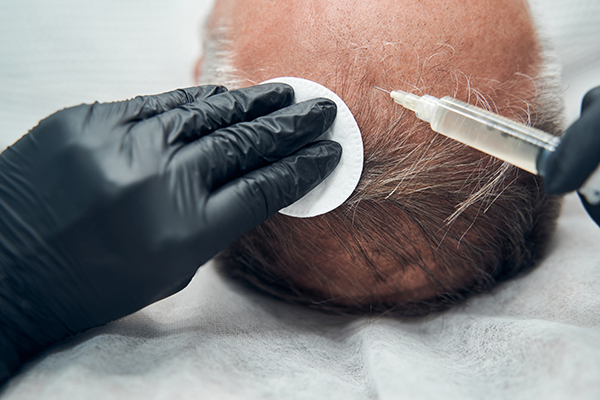

DHI HAIR TRANSPLANT
DHI is one of the newest techniques in the hair transplant industry. While the graft extraction process is similar to FUE, there are then some significant differences; the individually extracted hair follicles are securely positioned into an implanter tool, also known as a Choi Implanter Pen, and implanted directly into the recipient area. It leaves no visible scars, guarantees greater density and has a significantly higher hair growth success rate. The results therefore look incredibly natural.
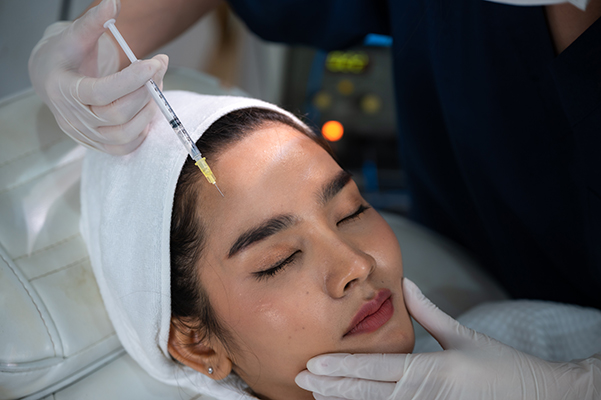

FEMALE HAIR TRANSPLANT
Hair loss is seen in approximately 30% of women. This can occur due to various reasons; environmental factors, stress, genetic factors, harmful cosmetic products and Alopecia areata in women, Hair transplants are not only for men and next gen remain committed to providing solutions to women. Hair transplants for women are performed with the same methods as men, and thanks to developing technologies, many women who experience hair loss are able to have a full head of hair once again.
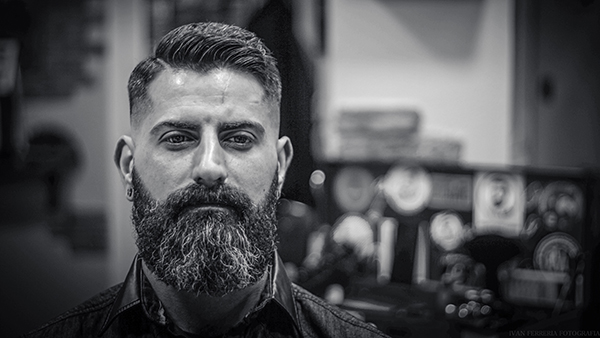

BEARD TRANSPLANT
A beard transplantation is a procedure that should be done by experts in the field. Shedding or gaps in the beard area can be disturbing for patients and a beard transplantation is the most advanced method to rectify the issue. Hair follicles are taken from one part of the person's body and are transferred to the beard area, to areas agreed prior to the procedure. Patients must be at least 20 years old to have a beard transplant.
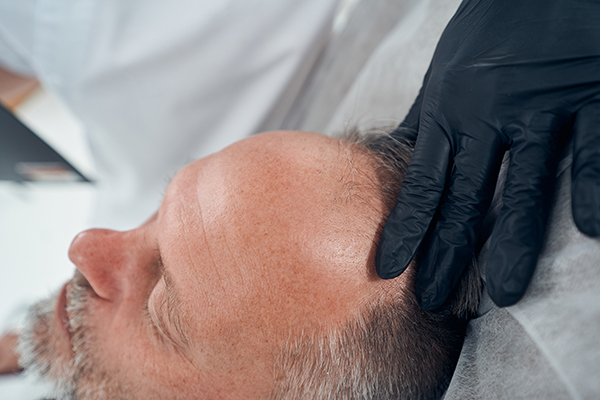

SAPPHIRE FUE HAIR TRANSPLANT
FUE Sapphire has become an increasingly popular hair transplant method. One to four hairs are removed, using a specialist extraction instrument less than 1mm in diameter, and then implanted directly into previously created small incisions. Until recently, these canals were opened using a refined and polished metal microblade. However, surgeons now use a specially developed sapphire tip. It has created a significant decrease in swelling, which means greater hair growth success rates and far superior density.
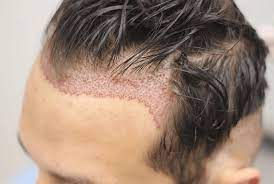

UNSHAVEN HAIR TRANSPLANT
FUE Sapphire has become an increasingly popular hair transplant method. One to four hairs are removed, using a specialist extraction instrument less than 1mm in diameter, and then implanted directly into previously created small incisions. Until recently, these canals were opened using a refined and polished metal microblade. However, surgeons now use a specially developed sapphire tip. It has created a significant decrease in swelling, which means greater hair growth success rates and far superior density.


EYEBROW TRANSPLANT
Eyebrow transplantation is an intricate procedure and should be carried out by specialists in the field. People resort to eyebrow transplantation in cases such as eyebrow loss or thinning of the eyebrows. As this method is a permanent solution, patients no longer have to resort to temporary measures. Hair roots are taken from suitable areas and transplanted to the eyebrow area, following the initial consultation and design stage.
Cosmetic Therapy. Made easy.
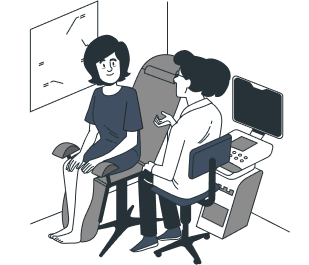

Book a free consultation
Speak with one of our cosmetic experts, who will tell you all about our treatments and services, learn more about your circumstances and provide Early recommendations.


Send your photo
We’ll ask you to share some photos so that a medical expert, specific to your desired treatment, can assess your current circumstances.


Get a quote
One of our experts will be in touch to book in for a call. At this point, our expert will talk through the options available to you and provide you with a quote.
Get a free consultation
Speak with one of our clinicians and get personalised advice.
Testimonials
Speak to our team
Speak with one of our clinicians and get personalised advice.
The next gen locations.


ISTANBUL, TURKEY
Next Gen is a leading company that has been serving in the field of health all over the world for over 5 years.
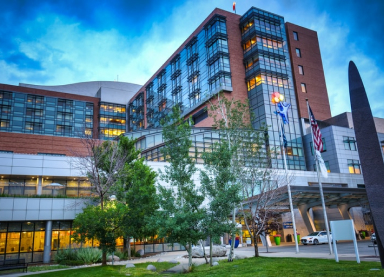

GOIANIA, BRAZIL
Next gen successfully perform cosmetic therapies all over the world for international patients, including Goiania, Brazil
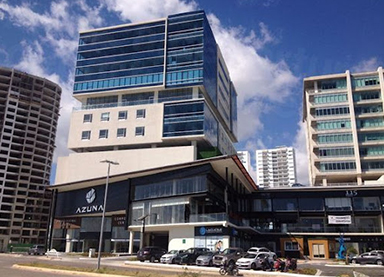

CANCUN, MEXICO
Next gen take innovation to the next level, only using JCI international certified hospitals, including at our Cancun location.
Get a free consultation
Speak with one of our clinicians and get personalised advice.
Faqs
What are the causes of Hair Loss in men?
Hair loss occurs when hair follicles that have previously produced healthy hairs begin to produce shorter, thinner, more brittle hairs with weaker shafts. This process is known as miniaturisation. Eventually, these follicles produce only fine, almost invisible short hairs, or in the worst case the hairs die out altogether. The most common cause in men is male patterned baldness.
Male patterned baldness is related to three interdependent factors:
1. Genes.
A predisposition to hair loss can be passed on by either parent. The common misconception that the genes on the maternal side have a greater impact is not the case. Having the gene does not necessarily mean you will go bald; for example, a man whose father is severely bald may not follow suit, but the chances are higher.
2. Hormones.
The hormone directly involved in hair loss is DHT. DHT decreases the length of the growing cycle so that with each new cycle the hair shaft becomes progressively smaller.
3. Age.
Genes and hormones are not enough by themselves to cause baldness. Hair loss occurs when the susceptible follicles are exposed to DHT over a period of time. However, the age at which this process starts differs from person to person.
What are the stages of balding?
The most common type of baldness is male pattern baldness, which occurs in stages. However, there is no definite time line for how this type of baldness progresses. You may notice that your hair has begun to thin quite noticeably in a short space of time, and then you might stay at that level of baldness for a long time before the next stage becomes obvious.
The best way of assessing how much hair you have lost and how rapidly you are losing it is by comparing photographs of you now to photos taken a few years ago.
The Norwood classification is an internationally recognised method of plotting the stages of hair loss in men. Below is a simplified version of the Norwood classification:
- STAGE 1 – The first tell-tale sign of the onset of Male Pattern Baldness is the frontal recessions in the hairline.
- STAGE 2 – Over time these recessions become larger and much more noticeable, and the hairline moves further back.
- STAGE 3 – At the same time as the recessions taking place, a thinning area may also appear on the crown and will gradually increase in size.
- STAGE 4 – The final stage of Male Pattern Baldness is when the hair is lost completely from the crown and frontal region, leaving the familiar horse shoe shape.
We understand the stress and anxiety that male pattern baldness can cause and our team of expert surgeons here at The Private Clinic are highly experienced in diagnosing and treating male pattern baldness to help restore hair loss.
What is the Norwood Scale?
The ‘Norwood Scale’, also known as the ‘Norwood Hamilton Scale’ is a tool used by hair transplant surgeons to measure the severity of your hair loss.
The Norwood Scale originated from Dr James Hamilton in the 1950s before it was modified by Dr O’Tar Norwood in the 1970s. The scale visually shows the variety of male pattern baldness patterns and the stages of progression.
- Stage 1 – No significant hair loss.
- Stage 2 – Slight recession of the hairline that is often referred to as an adult/mature hairline.
- Stage 3 – The first stage of significant balding, most common in the temples.
- Stage 4 – A more severe recession compared to stage 3, the hair on the top of the scalp may be sparse.
- Stage 5 – A larger area of hair loss the area between the receding hair line and top of the head is often very narrow.
- Stage 6 – Balding from the front to the top of the head.
- Stage 7 – The most severe stage of hair loss with only a band of hair remaining around the back and side of the scalp.
I have a medical condition; will I still be able to have a hair transplant?
It is important that you are upfront and honest about any pre-existing medical conditions with your surgeon. It will then be down to the surgeon’s discretion to decide if you are suitable or not.
To make an appointment to assess your suitability for an FUE Hair Transplant click here to book an appointment with one of our expert surgeons.
I have a needle phobia; will I still be able to have a hair transplant procedure?
It is possible for those with needle phobias to have a FUE hair transplant procedure. It is important that you let your surgeon know so they can put precautions in place to ensure that any needles are kept out of view during your procedure. Our hair transplant surgeons at next gen are very experienced in dealing with patients with needle phobias to help make the hair transplant procedure as comfortable and stress-free as possible.
How is my donor area chosen?
Donor hair for hair transplant procedures is often only taken from 1 area of the scalp which is the lower back portion of hair. At next gen we choose to only take donor hair from this area as the hair at the lower part of the scalp is not affected by DHT and no hair loss tends to occur from this area making the hair follicles being transplanted the best quality.
The lifespan of your donor hair during your lifetime is limited. Our expert hair transplant surgeons will always ensure that they use the best strategy to make sure that your donor hair is used in the best way. This is how we ensure patients gain the best possible results and we make sure to educate you regarding the potential for future hair loss. Next gen.
Can the donor hair be taken from someone else?
A Hair Transplant is not like an organ transplant meaning unfortunately you will not be able to use hair from another person. Donor hair can only be taken from your own head as your body will reject foreign hair unless you can commit to taking additional medication for the remainder of your life to ensure they remain in place.
Anti-rejection drugs can have a lot of potential side effects and long term risks and are often not easily prescribed to patients unless they have a severe medical need.
Where will the procedure be performed?
- London – 98 Harley street, W1G7HZ
- Manchester – 25 St John Street, M3 4DT
- Birmingham – 88 Hagley Road, B16 8LU – West Midlands
- Leeds – 45 Park Square North, LS1 2NP – Yorkshire
Our clinics are all CQC qualified with our expert hair transplant surgeons working within our dedicated hair transplant theatre rooms.
Hair Transplant consultations are also available at our clinics in;
- Northampton – 82 Billing Road, NN1 5DF – East Midlands
Book in for a hair transplant consultation to see where your hair transplant procedure could take place.
Will I need to shave my hair before a procedure?
On a standard FUE Hair transplant procedure you will be required to shave the donor area in the back and the sides and you will also need to be shaven in the treatment area. The majority of our FUE Hair Transplant patients at next gen do shave their entire head but in cases where patients are not keen we can either suggest hair styles or effective ways to cover the shaved areas post treatment or in some cases you may be suitable for an Unshaven FUE Hair Transplant.
Unshaven FUE Hair Transplants are a delicate procedure that requires a huge amount of technical skill. Next gen have spent many years perfecting the Unshaven FUE Hair Transplant method, and we understand what makes a suitable candidate for the best results.
To find out more book in for a hair transplant consultation here.
Does the procedure hurt?
An FUE Hair Transplant procedure is not painful, at next gen we use local anaesthetic to numb the area before the treatment starts which may sting a little bit initially, but after a few minutes you will not feel any pain for the rest of the procedure. Patients describe an odd feeling during the procedure as you may be able to sense the surgeon working on your scalp and a slight rubbing sensation, but it is all definitely bearable and some patients even find themselves falling asleep during the procedure.
Post-procedure you may start to feel a little discomfort in the hours after the procedure as the local anaesthetic begins to wear off, but this is easily managed with pain killers. Any post-procedure discomfort should not last longer than a few days and you will be fine to return to work within a week once the redness and initial swelling has subsided.
We aim to provide all of our patients with outstanding care during their time spent here at next gen and making you feel comfortable and relaxed leading up to and during any procedure is our priority.
How many procedures will I need?
An FUE Hair Transplant procedure is designed to be a standalone procedure providing you with results that should last a significant amount of time. This does vary slightly from patient to patient however, and will depend of your level of hair loss and desired outcome.
Many patients may require a second hair transplant procedure to target additional hair loss that has occurred since their first procedure but it can also help to increase the density of hair in the newly transplanted area, refine the hair line or increase the coverage of hair overall.
At next gen we always take the time before any hair transplant procedure to assess your level of hair loss and create a personalised treatment plan which not only aims to give you the results that you desire but protects your donor area too.
We recommend waiting at least a year before considering a second hair transplant procedure which will allow for your new hair follicles to grow and increase in their density allowing your surgeon to get an idea of how they are going to sit to be able to make a more informed decision about where to place any additional grafts.
What should I wear for my hair transplant procedure?
When you have a hair transplant procedure at next gen you will be with us for the majority of the day. We recommend that you wear comfortable clothing and most importantly a wide neck top or button up shirt as this will make it easier to remove post-treatment without rubbing against the newly transplanted hair follicles.
You will receive information on how to prepare for your Hair Transplant procedure ahead of your procedure at next gen.
Can I bring my own entertainment?
You can bring a tablet or your phone with music/movies on to keep you entertained throughout the day. At next gen we have televisions in most of our theatres but we find patients prefer to bring their own so they can have easier control of their viewing. It is actually not uncommon for patients to fall asleep during the procedure.
Will I be able to eat during the procedure?
You are not required to fast before a hair transplant procedure at next gen as the procedure will be carried out under local anaesthetic. When using local anaesthetic we do not fast patients as it is preferred that the patient has food in their stomach. Having a full stomach means that the anaesthetic last longer and often doesn’t need an excessive amount. Large amounts of local anaesthetic can cause additional swelling post-procedure which we always try to avoid here at next gen.
Your hair transplant procedure will start in the morning so we do recommend that you eat a substantial breakfast before arriving that will last you through until the afternoon. Once your surgeon has completed the extraction stage of the procedure, you will have a break which tends to be in the afternoon. During this break you will be able to stretch your legs, visit the bathroom and have something to eat – which we encourage.
At next gen we will provide lunch, snacks and drinks throughout the procedure. Please be sure to let your patient coordinator know of any dietary requirements so we can cater for you appropriately on the day, our priority is making you feel comfortable, relaxed and well catered for on the day of your Hair Transplant procedure at all times.
How long does the procedure take?
An FUE Hair Transplant procedure is a lengthy and delicate process which requires a substantial amount of time to ensure that you are receiving the best results. The total length of time of hair transplant treatments will depend on the number of hairs that are being transplanted. At next gen the majority of the time hair transplant procedures can be performed over the course of a day (6-8 hours).
In some cases the hair transplant procedure may need to be performed across two days, this is when a very large number of hairs are being transplanted and it would be more comfortable for the patient to perform it in two stages rather than one. Having a larger amount of time between the two procedures does not impact the effectiveness of the procedure and hair transplant procedures have been performed in this way many times with excellent results.
At next gen we do not rush our Hair Transplant procedures and our experienced surgeons take as long as they need to ensure the procedure is performed with precision and excellence.
Will there be an overnight stay?
At The Private Clinic the majority of our FUE Hair Transplant procedures are performed as day case procedures which means you will be free to leave once your procedure is over and recover in the comforts of your own home.
If your hair transplant procedure is taken place over two days then it if often required that you stay nearby.
Will my results look natural?
At next gen our aim is to provide you with long-lasting and natural looking results. Getting a natural hair transplant result relies mostly on the experience of your surgeon as well as the overall quality of your donor hair.
We pride ourselves on being able to offer you FUE Hair Transplant doctors who have perfected their techniques to ensure patients receive natural results.
Research into hair growth has revealed that natural scalp hairs grow in small groupings so our highly skilled team of hair surgeons use micro surgical needles to insert individual hair follicles at angles and density that match the patient’s natural existing hair growth. This ensures that when the new hair follicles begin to grow that they will mimic the characteristics of the surrounding hair follicles.
To see photos of our natural FUE Hair Transplant results, see our before and after photo gallery.
How long will my head look red for after the procedure?
After a FUE Hair Transplant, you are likely to experience redness on the scalp in both the donor area and recipient area which will remain for at least 7 days but can take up to 14 days to fully subside and in some cases a little longer. The redness is similar to the appearance of sunburn and occurs due to presence of newly formed blood vessels and just the general inflammation from the surgical procedure.
Our experienced hair transplant surgeons here at next gen will talk you through the aftercare plan and will be able to recommend ways to help reduce or disguise the redness.
How do I look after my newly transplanted hair?
Taking proper care of your newly transplanted hair is a really important stage of your FUE Hair Transplant procedure. At next gen we provide all of our hair transplant patients with an aftercare program that will include a course of antibiotics to reduce the risk of infection and specialist topical treatments along with detailed instructions on how to look after your newly transplanted hair.
Over the first three days following your procedure we advise that you avoid touching the new hair graphs this includes with your fingers, nails, a comb, hat or helmet. At next gen you are provided with a spray on solution that needs to be sprayed over the scalp every half hour ideally for the first three days. The spray will help to prevent the formation of scabs and keep your new hair follicles well hydrated. You will have also been given medication to go home with and it is important that you take these as prescribed on a regular basis.
You will also be given a series of post-op appointments where your surgeon will be able to take a look at your results and give you any additional information on how to care your new hair follicles.
Are there any complications associated with the procedure?
FUE Hair Transplant surgery is a very safe procedure that is performed regularly at The Private Clinic without any significant complications. Of course with any type of surgery or procedure there are risks such as; infection, swelling, bleeding, numbness, scarring, itching and loss of grafts.
As the placement incisions are so small, the risk of post-operative infection is very low. You will likely experience some redness and maybe some slight swelling in the treatment area immediately after treatment, but this will subside after two to four days.
You may experience some bleeding post-procedure and we advise keeping your head elevated and placing gauze over the area with applied pressure. Temporary numbness is common and can last for 3 to 18 weeks it does not usually affect you too much and it is very rare for it to be permanent.
At The Private Clinic we like you to be as informed as possible about your procedure so a full list of complications and risks will be discussed at your consultation with your expert surgeon to ensure that you are well aware and understand the procedure fully before going ahead with hair transplant surgery.
What scarring are you left with after a FUE Hair Transplant compared to an FUT Hair Transplant? (Contains graphic content)
The scarring left after a FUE Hair Transplant is minimal compared to the scar left after a FUT Hair Transplant. The only time that you would really notice any scarring would be if you were to shave your donor area of hair very short. Upon shaving you may notice some very small circular scars that may appear as little white dots. If you are not planning on keeping your hair short (0 length) then these will not be noticeable.
What is shock loss?
Although shock loss is rare, it is important to be aware of this risk before undergoing your hair transplant procedure. Shock loss is when your natural (non-transplanted) hairs are shocked from the trauma of the procedure and fall out. The hairs that are shed will usually re-grow so it is often just a temporary phenomenon. The risk of shock loss is very low and is more common in women and large hair transplant procedures compared to smaller cases. Your surgeon will be able to talk you through this in more information at your consultation.
Hair Transplant surgeons at The Private Clinic are very experienced in dealing with episodes of shock loss and will explain the rare phenomenon to you in detail at your FUE Hair Transplant consultation. Click here to book a consultation.
How long will the results last?
The results of a successful FUE Hair Transplant should last you for decades. This is largely because the donor hair being used is resistant to male pattern baldness and they will retain this characteristic even when transplanted into the recipient areas. This is where the experience of the surgeon is crucial, as they need to have the skills and experience to foresee potential future hair loss patterns.
It is important to note however that untreated areas of your scalp may still be prone to male pattern baldness and so over time balding and thinning may occur again in these areas which could result in another hair transplant procedure being carried out.
At The Private Clinic we take the time to assess your suitability for an FUE Hair Transplant in full detail taking great consideration of your age, grade of baldness, family history of hair loss, medical history and the quality of your donor as all of these factors will determine how successful your hair transplant is and how long it is likely to last for. To book your FUE Hair Transplant click here.
How long do I need to book off work?
We recommend that you take a week off work to recover in full from your FUE Hair Transplant procedure however many patients have been known to return to work a couple of days post-op whereas others have taken a full 2 weeks off.
The amount of time you take off work will depend on your job, your responsibilities and if you are happy for your colleagues to know about your procedure or not.
Your scalp will be red for a few days post procedure and you will need to take medication and use topical solutions on the area on a regular basis.
Will I be able to go on holiday after my procedure?
We would advise that you rest for at least a week before travelling anywhere on holiday.
When on holiday you must take great care not to expose your head to strong sunlight or rain for at least two weeks post procedure as this could damage the hair follicles.
In order to achieve the best result it is really important that you follow all of the care instructions given to you.
How long before I can sunbathe?
You should not be exposing your head to direct sunlight, or even rain for the first 14 days after your procedure. A hat should be worn especially when going out in direct sunlight to ensure you do not get sunburn on your head for 2 months post-procedure.
Post-operative care when having a FUE Hair Transplant is vital to ensure that you are promoting new hair growth as effectively as possible. If you are thinking about having a hair transplant contact us to find out more.
Can I swim after my procedure?
We recommend that you avoid swimming for at least 14 days after your procedure but this will depend on how strenuous your swimming activity will be, and the type of water that you will be swimming in. When swimming in salt water you should wait until any scabs have fully healed and of course, protect your scalp from excessive sun exposure. If you are swimming in chlorinated water then we recommend being a bit more cautious and waiting anywhere from 2 weeks to a month as the chlorine has the potential to damage any unhealed hair grafts so waiting until they are fully healed will reduce this risk
Post-operative care when having a FUE Hair Transplant is vital to ensure that you are promoting new hair growth as effectively as possible. If you are thinking about having a hair transplant contact us to find out more.
When can I wear a hat or helmet?
Many patients use hats to help cover up the signs that they have had a hair transplant but we do advise being cautious when it comes to wearing one so soon after you have had the procedure. Surgeon’s recommendations may vary on this topic but overall we generally recommend waiting 7-10 days before wearing a hat to avoid the risk of damaging any of the hair follicles.
In the early stages, the hat must be placed carefully on your head and if you feel any tightness, rubbing or general uncomfortableness then it is best to remove it as soon as possible. You should try and look for a hat that is slightly looser and sits as wide as possible around the head, if a hat is too tight it may stick to the follicles and cause unnecessary damage.
It is also best to only wear a hat when necessary, wearing them for extended periods of time at this early stage may cause increased sensitivity as your scalp will still be delicate from the procedure.
Helmets should be avoided for 2-3 weeks.
The team here at next gen will provide you with all the necessary information that you need to care for your new hair follicles after your FUE Hair Transplant procedure. We are always on hand to answer any additional questions about each stage of the procedure. If you are thinking about having a hair transplant contact us to find out more.
How long do I need to avoid alcohol for after my procedure?
Alcohol should be avoided ideally for a week before and after your FUE Hair Transplant procedure. Alcohol consumption thins your blood which can cause more bleeding during the procedure. Alcohol can also constrict the blood flow which can delay healing after a hair transplant and alcohol should not be mixed with the medication that you take post-procedure.
At next gen your surgeon will go through all of the aftercare dos and don’ts. Post-operative care when having a FUE Hair Transplant is vital to ensure that you are promoting new hair growth as effectively as possible. If you are thinking about having a hair transplant contact us to find out more.
Should I be dubious about a hair transplant clinic claiming 100% guarantee on a hair transplant procedure?
No hair transplant surgeon should state that a hair transplant procedure has a 100% guarantee – and this stands for all aesthetic surgical procedures not just hair transplants. It is an unreasonable statement to make as every procedure has its own risks and complications which although rare, can still happen. So if a company says anything about having a 98%-100% guarantee you should be wary.
If your hair transplant is unfortunately not successful and you are not happy with your results then a good surgeon will offer to fix any problems for you where possible.
There are many false claims out there so be sure to do your research about not only the procedure, but the surgeon carrying it out and the clinic that the procedure will be carried out in.
Here at next gen we do not claim any guarantees on our hair transplant procedures. Our team of expert surgeons will let you know of your suitability and will go through all of the risks associated with the procedure. To find out more about the FUE Hair Transplant procedure click here to contact us.
Am I suitable for a FUE Hair Transplant?
There are a lot of factors that play a part in making a hair transplant successful. Your suitability for a hair transplant will be made during a consultation where your medical history will be taken, a hair analysis will be carried out and you will be able to discuss what your desired results will be from a hair transplant. At this stage your highly experienced Hair Transplant surgeon will be able to ensure it is the right procedure for you. In order to make this decision your surgeon will be looking at your;
Age – Although there is not really an age limit for a hair transplant, it still plays a role with the best candidates for hair transplants being over 27-30 years old in age. Many younger patients who are experiencing hair loss can be quick to rush into hair transplant procedures to correct the appearance of balding but it is often likely that you will need additional treatment later on in life as your hair loss will still continue naturally. At next gen we like to wait until patients are a bit older so we can better determine the pattern on baldness to accurately perform the treatment to help counteract further baldness. In the meantime, you may be recommended to have the Tricho Hair Loss DNA test which can help you better understand the underlaying factors of hair loss and offer you a personalised treatment plan to help protect and maintain your healthy hair follicles.
Donor Area – You must have a good supply of healthy hair follicles available to be transplanted. The donor area is usually the lower back portion of the scalp. At next gen one of the most important stages of your consultation is assessing your level of hair loss and both the quality and quantity of your donor hair.
Type of Hair Loss – The cause of your hair loss will also play a big part in your suitability for a hair transplant. The best candidates are those suffering with male or female pattern baldness as typically only affects certain areas of the scalp not the entire scalp meaning your donor area is most likely going to be unaffected. Hair loss conditions that affect the entire scalp such as un-patterned alopecia would not have a successful hair transplant. At next gen we will only offer hair transplant procedures to those who are suitable as we do not believe in wasting your time or money on a procedure that is not going to give you long-lasting results.
Health – To be suitable for a hair transplant you must be in good health both medically and through making healthy life choices. If you have an underlying health condition it is best to make your surgeon aware.
To better determine your suitability for a hair transplant, contact us to book a hair transplant consultation with one of our expert hair transplant surgeons or knowledgeable patient advisors.
How many grafts/follicles will be transplanted?
The number of grafts that you require will depend on the size of the area that is being treated. Your surgeon will discuss with you what look you are aiming to achieve and on that basis be able to give you an estimated amount of grafts/follicles that they plan to transplant however this number can change during the procedure.
The total number of grafts used can change during the procedure itself so the exact hair count will then be discussed at the end of your procedure. At next gen we are able to safely extract 7,000 hairs in one day.
How does follicular unit extraction (FUE) work?
An FUE hair transplant involves taking individual hair follicles from the donor part of the scalp and then transplanting them back into areas of the head that are suffering from male pattern baldness.
Donor hair is taken from the back of the head where there is healthy and permanent hair growth. Donor hair from the back of the head is also resistant to DHT which is the most common cause of male pattern baldness. Find out more about DHT here.
When these DHT resistant hair follicles are transplanted into a new area, they still retain this element meaning that the hair will be more likely to survive and stay unless it was genetically meant to fall out.
Hairs that have been transplanted from your donor area are also able to successfully root as they are from your own head. This is why hair transplanted from other areas or even other people will not be possible.
To find out more about our successful hair transplant procedures click here to book an appointment with our specialist hair transplant surgeons.
How soon will I see the results?
Patients will be able to see the outline of their new hairline immediately following treatment and the hair will start to grow as normal right away. It is perfectly normal for the transplanted hair to shed again a few weeks after treatment, but after that shedding process it will grow back strong and healthy and will remain permanently. Results will start to be seen about four – six weeks after treatment with full results being seen between six to twelve months.
At next gen you will be offered a number of follow up procedures where you will be able to meet with your surgeon to discuss the results of your procedure at different stages. During these consultations your surgeon can give you advice on how to continue caring for your newly transplanted hair as well as answer any questions that you may have about your FUE Hair Transplant procedure.
Can a Trichologist help my hair loss?
You can seek advice from a Trichologist if you are losing hair in its early stages, however for balding areas, a hair transplant is often the most effective solution. Next gen have many years of experience in our specialised FUE technique. All our clinics have CQC registered medical facilities to give you the hair and look you are after. Read about next gen here. Our reputation is such that we do not take short cuts, we will only give you honest advice with the results you are looking for.

